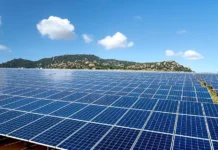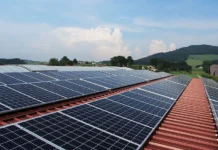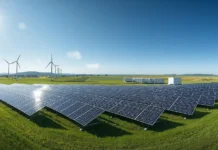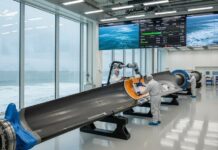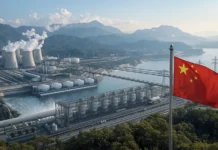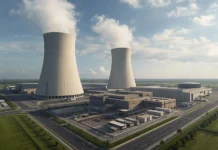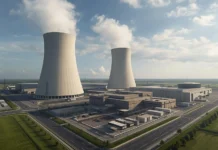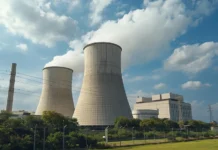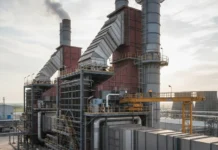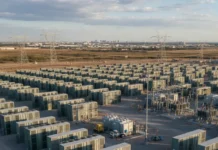Smart Grid Technologies: Bridging Process Industries and Utilities
The convergence of advanced digital technologies with traditional power infrastructure has created unprecedented opportunities for smart grid technologies connecting industries and utilities in ways that fundamentally transform energy systems operations. This technological revolution extends far beyond simple monitoring and control, creating integrated ecosystems where industrial processes, power generation facilities, and utility operations coordinate seamlessly to optimize energy efficiency, enhance reliability, and enable dynamic response to changing market conditions.
Modern smart grid implementations represent sophisticated networks of interconnected devices, sensors, and control systems that facilitate bidirectional communication between energy producers and consumers. These systems leverage Internet of Things (IoT) technologies, artificial intelligence, and advanced analytics to create intelligent energy networks capable of autonomous decision-making and real-time optimization across industrial and utility operations.
The integration between process industries and utilities through smart grid technologies addresses critical challenges facing modern energy systems, including increasing renewable energy penetration, growing electricity demands from industrial processes, and the need for enhanced grid stability in an era of distributed energy resources. This technological convergence creates opportunities for improved energy efficiency, reduced operational costs, and enhanced environmental performance across both industrial and utility sectors.
The Architecture of Smart Grid Integration
Smart grid technologies operate through sophisticated network architectures that connect industrial facilities directly with utility control systems and market operations. These connections enable real-time data sharing, coordinated control actions, and automated response to grid conditions that benefit both industrial operations and overall power system reliability.
Advanced metering infrastructure forms the foundation of smart grid connectivity, providing high-resolution data on energy consumption patterns, power quality characteristics, and load dynamics across industrial facilities. These systems enable utilities to understand industrial energy usage patterns in unprecedented detail while providing industrial operators with insights into energy costs and optimization opportunities.
Distribution automation systems coordinate between utility grid operations and industrial facility energy management systems to optimize power flows, manage voltage levels, and respond to changing load conditions. These systems can automatically adjust industrial load patterns to support grid stability while minimizing energy costs for industrial operations.
Communication networks utilizing fiber optic cables, wireless technologies, and power line communications create the data highways that enable seamless information exchange between industrial facilities and utility operations centers. These networks must provide reliable, low-latency communications that support real-time control actions and emergency response procedures.
Industrial Internet of Things and Energy Management
The proliferation of IoT sensors throughout industrial facilities creates vast networks of connected devices that monitor energy consumption, process conditions, and equipment performance in real-time. These sensor networks generate continuous streams of operational data that enable sophisticated energy management strategies and grid integration capabilities.
Smart meters and energy monitoring systems provide granular visibility into energy usage patterns across different industrial processes, enabling identification of optimization opportunities and coordination with utility demand response programs. These systems can automatically adjust energy consumption based on real-time electricity prices and grid conditions.
Process control integration enables industrial automation systems to respond automatically to grid signals and market conditions while maintaining production quality and efficiency. These integrated systems can modulate energy-intensive processes during peak demand periods or increase consumption when excess renewable energy is available.
Equipment monitoring and predictive maintenance systems ensure that industrial energy systems operate at peak efficiency while supporting grid stability requirements. These systems can identify developing problems before they impact energy performance or grid interactions.
Real-Time Energy Management and Grid Coordination
Real-time energy management systems enable dynamic coordination between industrial energy consumption and utility grid operations through advanced control algorithms and market participation mechanisms. These systems continuously optimize industrial energy usage to minimize costs while supporting overall grid stability and efficiency.
Demand response participation allows industrial facilities to adjust energy consumption in response to grid conditions, electricity prices, and utility requests for load modification. These programs create financial incentives for industrial energy flexibility while providing utilities with valuable grid management resources.
Energy storage integration enables industrial facilities to participate in grid services markets while optimizing their own energy costs through strategic charging and discharging of battery systems. These applications support both industrial operations and grid stability requirements.
Real-time pricing systems enable industrial facilities to respond dynamically to changing electricity market conditions by adjusting production schedules and energy consumption patterns. These systems can automatically shift energy-intensive processes to periods of lower electricity costs while maintaining production requirements.
Digital Grid Infrastructure and Communication Systems
Modern digital grid implementations require sophisticated communication and control infrastructure that can support real-time coordination between industrial facilities and utility operations. These systems must provide secure, reliable communications while maintaining the operational flexibility needed for both industrial processes and grid management.
Supervisory Control and Data Acquisition (SCADA) systems coordinate between industrial facility controls and utility grid operations to enable seamless information sharing and coordinated control actions. These systems provide the operational backbone for integrated energy management across industrial and utility operations.
Advanced distribution management systems enable utilities to optimize grid operations while incorporating real-time data from connected industrial facilities. These systems can coordinate voltage regulation, power flow optimization, and emergency response actions that consider industrial facility operations and constraints.
Cybersecurity frameworks protect critical communications and control systems from cyber threats while enabling the open information sharing necessary for effective grid integration. These security measures must balance protection requirements with operational efficiency needs.
Energy Automation and Optimization Technologies
Energy automation systems leverage artificial intelligence and machine learning algorithms to optimize energy usage across industrial facilities while supporting utility grid objectives. These systems can automatically balance multiple operational objectives including cost minimization, environmental performance, and grid stability support.
Load forecasting algorithms predict industrial energy consumption patterns to enable better grid planning and market operations. These systems combine historical usage data with production schedules and market conditions to provide accurate predictions of future energy needs.
Optimization algorithms automatically adjust industrial energy consumption and production schedules to minimize costs while meeting operational requirements and supporting grid stability. These systems can coordinate multiple energy sources and storage systems to achieve optimal performance.
Automated demand response systems enable industrial facilities to participate in utility programs without manual intervention, automatically adjusting energy consumption based on grid conditions and market signals while maintaining production quality and schedules.
Grid Stability and Reliability Enhancement
Industrial facilities connected through smart grid technologies can provide valuable services that enhance grid stability and overall power system reliability. These services include frequency regulation, voltage support, and emergency backup power that help utilities maintain stable grid operations.
Frequency regulation services utilize industrial equipment that can rapidly adjust power consumption or generation in response to grid frequency deviations. Industrial motors, heating systems, and other flexible loads can provide fast-responding resources that help maintain grid frequency within acceptable limits.
Voltage support capabilities enable industrial facilities to help utilities maintain proper voltage levels throughout distribution systems. Industrial facilities can adjust reactive power consumption or utilize on-site generation to support local voltage regulation requirements.
Emergency response capabilities allow industrial facilities to quickly reduce energy consumption during grid emergencies or provide backup power to support critical grid infrastructure. These capabilities can help prevent cascading failures and maintain essential services during extreme events.
Renewable Energy Integration and Flexibility
Smart grid technologies enable industrial facilities to support renewable energy integration through flexible operations that can accommodate variable solar and wind generation patterns. Industrial processes can adjust energy consumption timing to utilize renewable energy when available while reducing demand during periods of low renewable output.
Energy storage systems at industrial facilities can store excess renewable energy during periods of high generation and discharge stored energy when renewable output decreases. These distributed storage resources provide valuable grid services while reducing energy costs for industrial operations.
Virtual power plants aggregate industrial facilities, distributed generation, and energy storage systems to provide coordinated grid services that support renewable energy integration. These systems can respond faster than traditional power plants while providing more flexible operational characteristics.
Green energy procurement programs enable industrial facilities to source renewable energy directly while supporting grid operations through flexible consumption patterns. These programs can reduce industrial carbon footprints while providing utilities with valuable demand flexibility.
Industrial Power Applications and Use Cases
Manufacturing facilities represent significant opportunities for smart grid integration through flexible production scheduling and energy-intensive process optimization. These facilities can adjust production timing to utilize low-cost electricity while maintaining product quality and delivery schedules.
Data centers provide excellent opportunities for grid integration through flexible cooling systems, backup power resources, and load scheduling capabilities. These facilities can modulate energy consumption for cooling and non-critical operations while maintaining essential computing services.
Chemical processing plants can optimize energy-intensive processes such as electrolysis, heating, and compression to utilize renewable energy when available and reduce consumption during peak demand periods. These optimizations can reduce energy costs while supporting grid stability.
Steel production facilities can coordinate electric arc furnace operations with grid conditions to provide valuable load flexibility while maintaining production schedules. These applications can significantly reduce energy costs while supporting renewable energy integration.
Market Mechanisms and Economic Benefits
Smart grid technologies enable new market mechanisms that create economic value for both industrial facilities and utilities through energy flexibility and grid services. These markets provide financial incentives for grid-beneficial behaviors while reducing overall energy system costs.
Capacity markets allow industrial facilities to provide reliable demand reduction capabilities that support grid reliability during peak demand periods. These markets compensate industrial facilities for maintaining the ability to reduce energy consumption when needed.
Ancillary services markets enable industrial facilities to provide frequency regulation, spinning reserves, and voltage support services using flexible loads and on-site generation resources. These services can generate significant revenue while supporting grid operations.
Energy arbitrage opportunities allow industrial facilities with energy storage or flexible processes to purchase electricity during low-price periods and reduce consumption during high-price periods. These strategies can significantly reduce energy costs while supporting grid efficiency.
Advanced Analytics and Artificial Intelligence
Machine learning algorithms optimize industrial energy consumption patterns by analyzing historical data, production schedules, and grid conditions to identify optimal operating strategies. These systems continuously learn and adapt to changing conditions while maintaining operational requirements.
Predictive analytics forecast energy prices, grid conditions, and renewable energy availability to enable proactive optimization of industrial energy consumption and production scheduling. These systems help industrial facilities maximize economic benefits while supporting grid operations.
Artificial intelligence-powered control systems automatically coordinate between industrial processes and grid requirements to optimize performance across multiple objectives simultaneously. These systems can balance cost minimization, environmental performance, and grid stability support in real-time.
Digital twins of industrial energy systems enable advanced scenario analysis and optimization strategy development without disrupting actual operations. These virtual models help identify optimization opportunities and test new control strategies before implementation.
Environmental Benefits and Sustainability
Smart grid technologies enable significant environmental benefits through improved energy efficiency, enhanced renewable energy utilization, and reduced overall carbon emissions from both industrial operations and power generation. These benefits support corporate sustainability goals while contributing to broader environmental objectives.
Carbon footprint reduction results from optimized energy consumption timing that prioritizes renewable energy utilization and avoids high-carbon electricity generation during peak demand periods. Industrial facilities can significantly reduce emissions through coordinated operations with utility systems.
Energy efficiency improvements result from real-time optimization of industrial processes and energy systems based on comprehensive operational data and advanced analytics. These improvements reduce total energy consumption while maintaining production requirements.
Renewable energy utilization increases through flexible industrial operations that can adjust energy consumption timing to match renewable energy availability. This flexibility enables higher renewable energy penetration while maintaining grid stability.
Implementation Challenges and Solutions
Technical integration challenges include harmonizing different communication protocols, control systems, and operational requirements between industrial facilities and utility operations. Successful implementations require careful planning and flexible system architectures that can accommodate diverse technical requirements.
Regulatory and market structure challenges may limit the ability of industrial facilities to participate in energy markets or provide grid services. Policy developments that recognize the value of industrial flexibility and create appropriate market mechanisms are essential for widespread adoption.
Cybersecurity considerations become more complex when industrial control systems connect directly with utility grid operations. Comprehensive security frameworks must protect both industrial processes and grid infrastructure while enabling effective coordination.
Economic and business model challenges require new approaches to sharing costs and benefits between industrial facilities and utilities. Successful implementations require fair compensation mechanisms that incentivize grid-beneficial behaviors while maintaining industrial competitiveness.
Smart grid technologies connecting industries and utilities represent a fundamental transformation in energy system operations that creates unprecedented opportunities for efficiency, reliability, and environmental performance improvements. The integration of industrial processes with utility grid operations through advanced digital technologies enables coordinated optimization that benefits both sectors while supporting broader energy system objectives. As these technologies continue evolving and regulatory frameworks adapt to support new market mechanisms, the convergence between industrial energy management and utility grid operations will become increasingly essential for competitive industrial operations and reliable, sustainable power systems.
Key Takeaways:
- Smart grid integration enables real-time coordination between industrial facilities and utility operations
- IoT sensors and digital technologies create comprehensive energy management ecosystems
- Industrial facilities can provide valuable grid services including frequency regulation and voltage support
- Advanced analytics and AI optimize energy consumption while supporting renewable energy integration
- Market mechanisms create economic incentives for grid-beneficial industrial energy behaviors




